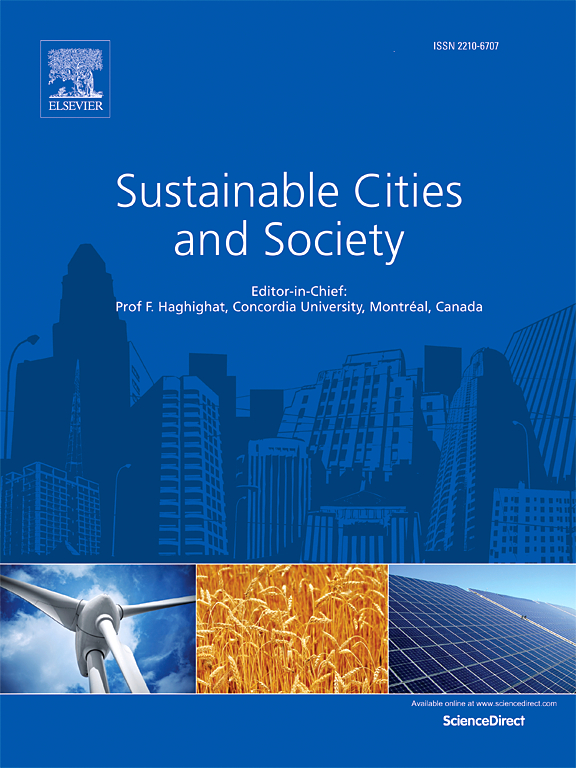低排放区和不平等:汽车限制和减少巴黎地区的空气污染
IF 10.5
1区 工程技术
Q1 CONSTRUCTION & BUILDING TECHNOLOGY
引用次数: 0
摘要
在过去的几十年里,低排放区(LEZs)已经成为改善欧洲空气质量的一种广泛采用的工具。然而,科学文献对其实施过程中的不平等关注有限。为了解决这一差距,本文建议确定受空气污染减少影响最小的居民和受不合规车辆所有权影响最大的居民,重点是巴黎地区(法国)。通过将Enquête global Transport的数据与时空NO2浓度水平数据相结合,该方法首先评估了被调查个体的时空暴露,考虑了他们的活动和运输方式。因此,目标是研究与减少暴露水平和不合规车辆所有权有关的个人不平等。一系列独立的逻辑回归模型,然后联合评估个人暴露水平低于世卫组织建议阈值的可能性以及更换不合规车辆的必要性。结果显示,最贫困的居民受到违规车辆限制的影响最大,无论是在接触方面还是在所有权方面,最终都面临双重不平等。这种不平等在更宏大的设想中就不那么明显了。本文章由计算机程序翻译,如有差异,请以英文原文为准。
Low emission zone and inequalities: car restriction and reduction of air pollution exposure in the Paris region
Over the past few decades, Low Emission Zones (LEZs) have emerged as a widely adopted tool for improving air quality accross Europe. However, the scientific literature devotes limited attention to the inequalities associated with their implementation. In addressing this gap, this article proposes to identify the residents least affected by reductions in air pollution and those most impacted due to ownership of non-compliant vehicles, focusing on the Paris region (France). By integrating data from the Enquête Globale Transport with data on spatio-temporal NO2 concentration levels, the methodological approach first evaluates the spatio-temporal exposure of surveyed individuals, considering their activities and transport modes. Thus, the objective is to study individual inequalities related to reduced exposure levels and non-compliant vehicle ownership. A series of logistic regressions model independently, and then subsequently jointly, estimate the likelihood of individual exposure levels falling below the WHO recommended threshold and the need to replace a non-compliant vehicle. The results reveal that the poorest residents are the most affected by restrictions on non-compliant vehicles, both in terms of exposure and ownership, and ultimately facing a double inequality. This inequality is less evident in the case of a more ambitious scenario.
求助全文
通过发布文献求助,成功后即可免费获取论文全文。
去求助
来源期刊

Sustainable Cities and Society
Social Sciences-Geography, Planning and Development
CiteScore
22.00
自引率
13.70%
发文量
810
审稿时长
27 days
期刊介绍:
Sustainable Cities and Society (SCS) is an international journal that focuses on fundamental and applied research to promote environmentally sustainable and socially resilient cities. The journal welcomes cross-cutting, multi-disciplinary research in various areas, including:
1. Smart cities and resilient environments;
2. Alternative/clean energy sources, energy distribution, distributed energy generation, and energy demand reduction/management;
3. Monitoring and improving air quality in built environment and cities (e.g., healthy built environment and air quality management);
4. Energy efficient, low/zero carbon, and green buildings/communities;
5. Climate change mitigation and adaptation in urban environments;
6. Green infrastructure and BMPs;
7. Environmental Footprint accounting and management;
8. Urban agriculture and forestry;
9. ICT, smart grid and intelligent infrastructure;
10. Urban design/planning, regulations, legislation, certification, economics, and policy;
11. Social aspects, impacts and resiliency of cities;
12. Behavior monitoring, analysis and change within urban communities;
13. Health monitoring and improvement;
14. Nexus issues related to sustainable cities and societies;
15. Smart city governance;
16. Decision Support Systems for trade-off and uncertainty analysis for improved management of cities and society;
17. Big data, machine learning, and artificial intelligence applications and case studies;
18. Critical infrastructure protection, including security, privacy, forensics, and reliability issues of cyber-physical systems.
19. Water footprint reduction and urban water distribution, harvesting, treatment, reuse and management;
20. Waste reduction and recycling;
21. Wastewater collection, treatment and recycling;
22. Smart, clean and healthy transportation systems and infrastructure;
 求助内容:
求助内容: 应助结果提醒方式:
应助结果提醒方式:


